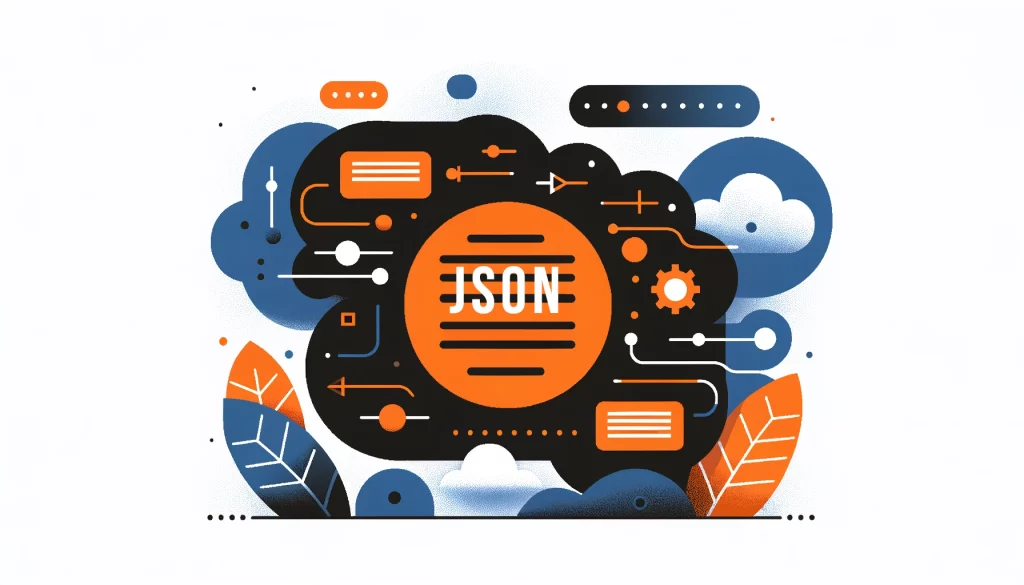
JSON Masking

JSON masking is a technique used to protect sensitive data in web applications. It involves obscuring or hiding specific fields within a JSON object before sending it to the client-side. This practice ensures that confidential information, such as personal details, financial data, or login tokens, remains secure and inaccessible to unauthorized parties.
When working with JSON data, it’s important to hide sensitive information to avoid data leaks or misuse. Developers can use JSON masking to hide sensitive information from the client-side. This allows them to keep the structure and functionality of the JSON object intact.
Why is JSON Masking Important?
Web applications often handle sensitive user information, and it’s the responsibility of developers to protect this data from unauthorized access. JSON masking plays a vital role in safeguarding sensitive data and maintaining user trust.
Consider a scenario where a web application sends a JSON object containing user details to the client-side. Potential attackers could expose fields like email addresses, phone numbers, or credit card information without proper masking. With JSON masking, developers can hide sensitive fields to reduce data breach risks and comply with privacy regulations.
Techniques for JSON Masking
Several techniques exist that developers can employ to mask sensitive data in JSON objects. Let’s explore a few common approaches:
- Field Exclusion:
One straightforward method is to exclude sensitive fields from the JSON object altogether. Developers can protect sensitive information by leaving out certain fields before sending data to the client-side. For example:
Original JSON:
{
"name": "John Doe",
"email": "[email protected]",
"creditCard": "1234-5678-9012-3456"
}
Masked JSON:
{
"name": "John Doe"
}
- Field Obfuscation:
Another approach is to obfuscate sensitive fields by replacing the actual values with masked or dummy data. This technique allows the JSON object to retain its structure while hiding the sensitive information. For example:
Original JSON:
{
"name": "John Doe",
"email": "[email protected]",
"creditCard": "1234-5678-9012-3456"
}
Masked JSON:
{
"name": "John Doe",
"email": "****@example.com",
"creditCard": "****-****-****-3456"
}
- Hashing or Encryption:
To make it more secure, developers can scramble important data before putting it in the JSON object. Hashing turns data into a unique, fixed-size string that can’t lead to the original value. Encryption, on the other hand, involves transforming the data using a specific algorithm and a secret key. Both techniques ensure that unauthorized parties cannot read or access the masked data, keeping it secure.
Implementing Masking in Your Web Application
To implement JSON masking in your web application, you can follow these general steps:
- Identify Sensitive Fields:
Review your JSON objects and identify the fields that contain sensitive information. This may include personal details, financial data, or any other confidential information specific to your application.
- Choose a Masking Technique:
Determine the appropriate masking technique for each sensitive field. Think about how secure you need things to be, what kind of data you have, and any rules you must follow.
- Apply Masking Logic:
Implement the chosen masking technique in your server-side code. You can do this using conditional statements, mapping functions, or by using libraries specifically designed for JSON masking. Make sure to apply the masking logic consistently across all relevant JSON objects.
- Test and Validate:
Thoroughly test your JSON masking implementation to ensure it properly masks or excludes sensitive fields. Verify that the masked JSON objects still maintain the necessary structure and functionality required by your application.
- Monitor and Update:
Regularly monitor your web application for any changes in data structure or new sensitive fields that may require masking. Keep your masking logic up to date to ensure ongoing protection of sensitive data.
Best Practices for JSON Masking
To ensure effective JSON masking and maintain the security of your web application, consider the following best practices:
Only include the necessary fields in your JSON objects. Do not send sensitive data that the client-side does not require. By minimizing the exposure of sensitive information, you reduce the risk of data breaches.
- Secure Communication:
Always use secure communication protocols, such as HTTPS, when transmitting JSON data between the server and the client. Encrypting the data in transit adds an extra layer of security and prevents unauthorized interception.
- Server-Side Masking:
Perform JSON masking on the server-side rather than relying on client-side redaction. This makes sure that important information stays hidden until it gets to the customer, lowering the chance of tampering or exposure.
- Regularly Update and Patch:
Keep your web application and its dependencies up to date with the latest security patches and updates. Regularly monitor for any weaknesses or security issues related to JSON masking and address them promptly.
- Educate and Train:
Ensure that your development team is well-versed in JSON masking techniques and understands the importance of data security. Provide regular training and guidelines to maintain a strong security mindset throughout the development process.
Conclusion
JSON masking is a crucial technique for protecting sensitive data in web applications. By selectively hiding or obfuscating sensitive fields within JSON objects, developers can ensure the security and privacy of user information. Implementing JSON masking requires careful consideration of the specific data fields, choosing appropriate masking techniques, and following best practices for secure data handling.
To build trust with users and comply with data protection laws, securely store JSON data in your website development. This will also help protect against data leaks.
